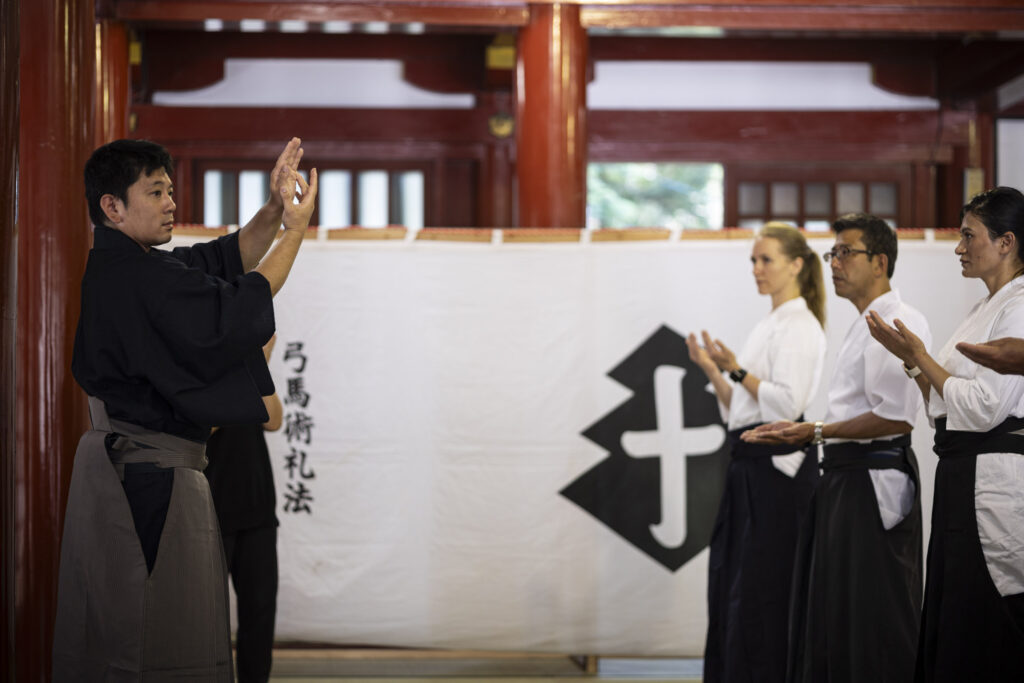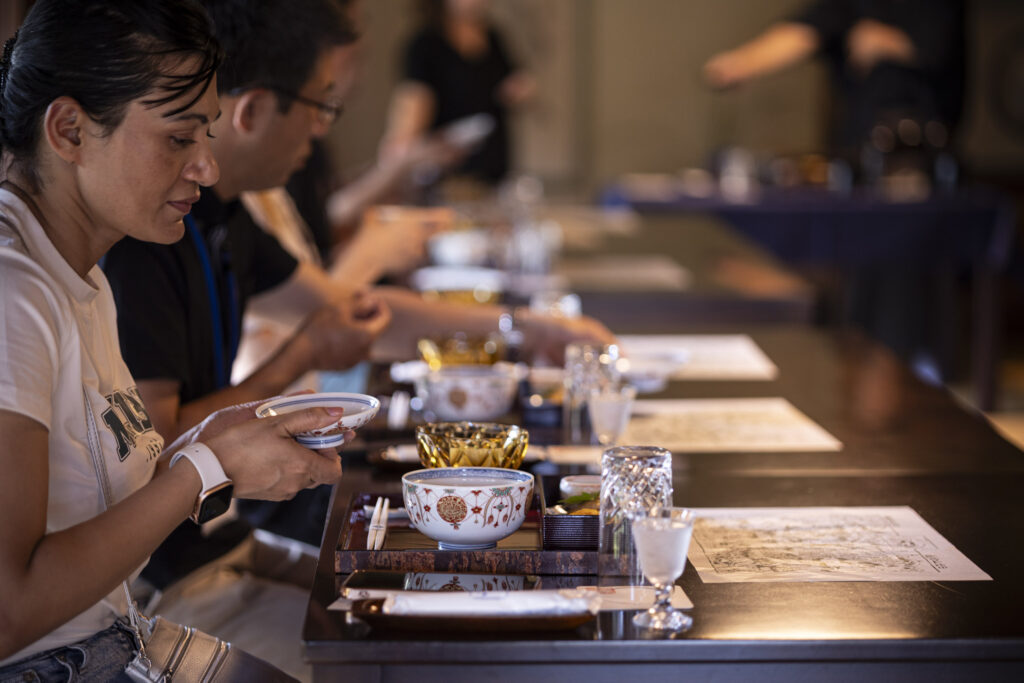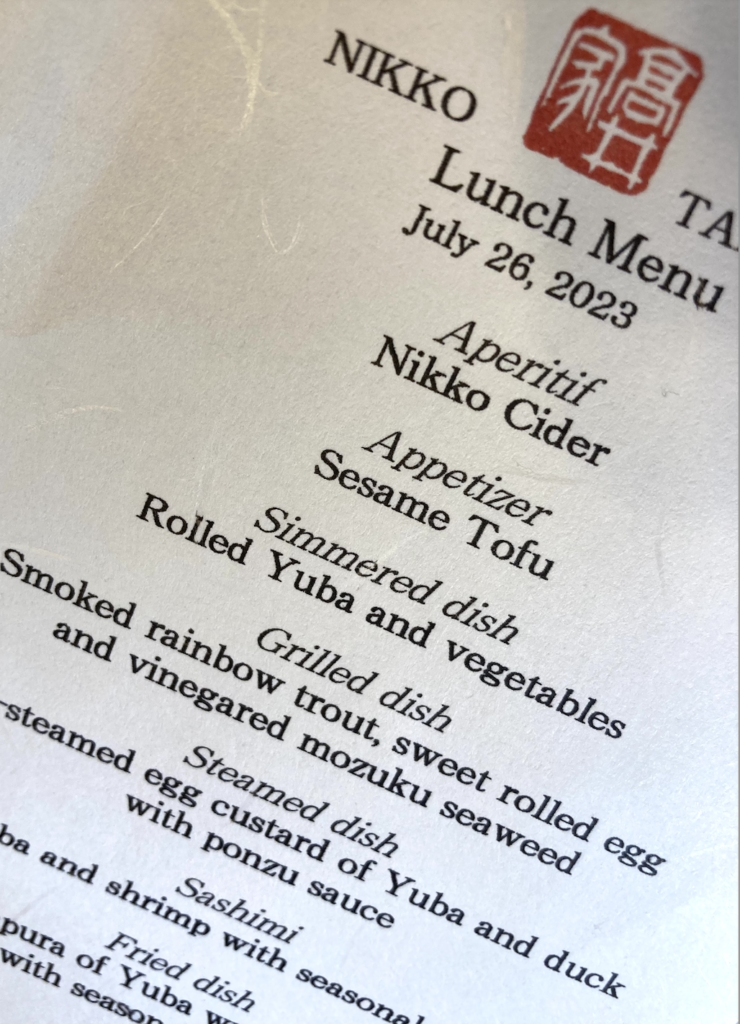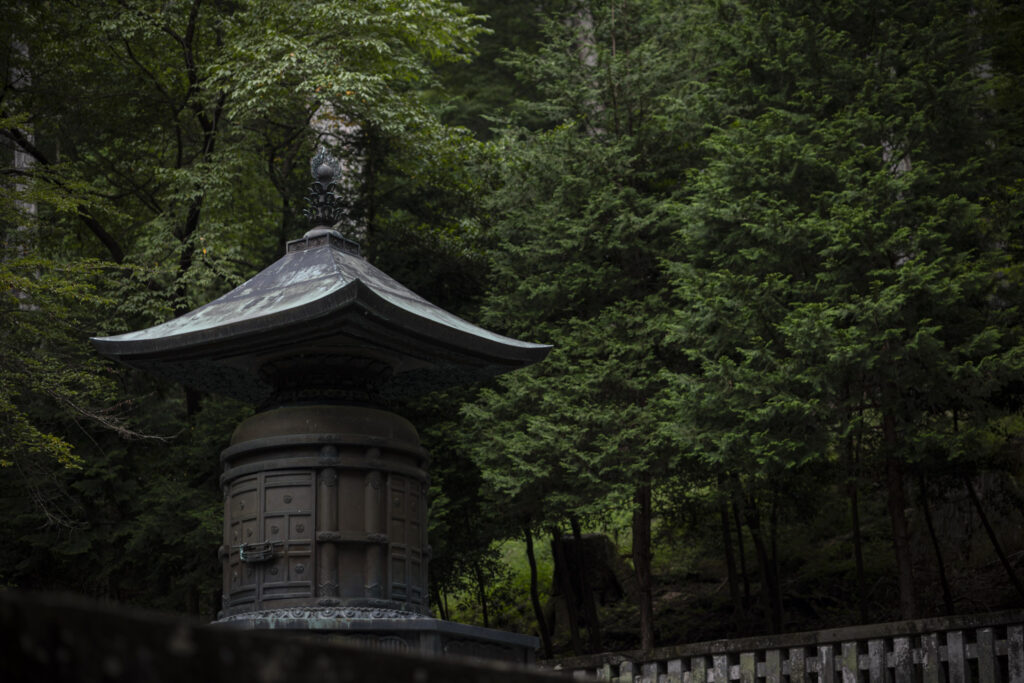Shogun Etiquette and Spiritual Experiences

日光は日本では稀有な宝石であり、日本人には広く知られているが、この聖地は英語の印刷物やメディアではあまり言及されていない事は信じ難い。東京の北、内陸にひっそりと佇むこの地域には、日本で最も貴重で古くから受け継がれてきた伝統や慣習がある。東京の雑踏や街並みから1日か2日抜け出して、何世紀にもわたって日本のリーダーである将軍を生み出した時代と文化的エートスに浸ってみてはいかがだろう。日光には多くの芸術や文化の伝統が残されている。私たちは、日本のエリート指導者たちの肉体と精神の育成を特に凝縮した2つの伝統に焦点を当てこのプロジェクトを紹介する。
Ogasawara-Ryū:
For more than eight centuries, Ogasawara-ryū has provided the foundation and framework for how samurai are to conduct themselves both on the field and off. Within this venerated tradition of etiquette and skill are two forms of archery: “kyujitsu” or “hosha” and “yabusame”, of which three different styles are preserved with Ogasawara-ryū . Kyujitsu is the traditional Japanese martial art of archery, and yabusame is the art of horse-mounted archery. Kyudo is noted for its zen-like calm and processional development. Yabusame, as the archer grips his steed and as the horse gallops at break-neck speeds, he must do his best to strike three targets from his bow at a blistering pace. Although entirely different contexts in which the archer must let fly their arrows, the core values of Ogasawara-ryū bind them in a unique and holistic manner.
There is much more than the act of arrows drawn back in bows before release. Some forms of archery have purification purposes. There are rituals and ceremonies, linking to ancient Shinto traditions that unify the archer to their art and creating an organic linkage that bonds both to the natural spaces that surround.
But before the bow is fit to the hand and the arrow nocked into its bowstring, a proper and fitting understanding of samurai etiquette is required. The Ogasawara-ryū has also been the guardians and keepers of the “Reiho”, the forms of etiquette and comportment that is needed for samurai and shogun.





In Reiho, we learn how to stand, walk, manage basic body movements. There are correct ways to sit and to rise from sitting. There are table manners, learning how to properly eat and drink, and how to hold and manage everyday objects. These manners and adherence to etiquette help form and set the mind of the martial artist. In Ogasawara-ryū, it is from manners and correctness in everyday actions that the mind is forged, and from here a martial arts path may be pursued.







At Butokuden (Hall of Butoku)
(Registered Tangible Cultural Property)
“Butoku” refers to the moral principles that one should uphold as a samurai. It is also a term to represent the prestige and virtue of a samurai warrior.
Butokuden was initially created as a rest place for worshippers (built in 1914), and to commemorate the 300th anniversary of the Toshogu Shrine. Now it is used as a place to develop physical training and mental discipline for modern warriors. The training of Toshogu Dojo students consists of wooden horse training for yabusame (mounted) archery, and martial arts training camps sessions for many groups from boys to adults. The Toshogu Butokuden is called “the place where kendo was revived after the war” and is also registered as a Tangible Cultural Property of Japan.
Martial arts experiences and training are made possible by the head of the Ogasawara-ryu or the Yagyu Shinkage-ryu sword school. Such experiences are exclusive to the Nikko Shogun Story and its participants.





Ogasawara-manners:
At Takaiya Nikko, a restaurant with a history of more than 200 years, you can enjoy some unique Japanese traditional cuisine. “Washoku”, which means, “Japanese cuisine” was included on UNESCO’s Intangible Cultural Heritage of Humanity list in 2013. While dining in this exquisite restaurant we will take a lesson on the etiquette of dining using Ogasawara manners.



Learn the Ogasawara style of dining by the head of the Ogasawara school at the Nikko Takaiya Japanese Restaurant and enjoy a multi-course traditional Kaiseki meal.








Yagyū Shinkage Ryū:
Proficiency and skill with the Japanese katana is a work that takes a lifetime, and is only truly deeply mastered by precious few. For centuries, Yagyū Shinkage Ryū has maintained its methods and secrets in swordsmanship, also called “heihō”. We take time on our journey to visit their training spaces and to discover more of their traditions in this ancient martial art. In the Yagyū Shinkage Ryū style of “heihō”, the usage of the sword requires a relaxed state of mind and body, a fluidity and naturalness, that is called, “sei shizen”. Masters teaching this craft of swordsmanship emphasize the unity of mind and movement and recognize the inseparable link that exists between them. The study and pursuit of Yagyū Shinkage Ryū is not merely proper sword usage, but rather, a way to educate and correct the mind as we continually strive for personal improvement. The personal growth that practitioners and experts in Yagyū Shinkage Ryū fastidiously pursue are summed up in five key virtues. They are, in short:
“Jin” – Thinking of Others Deeply
“Gi” – Keeping “the way” as a Person in Righteousness
“Rei” – Adherence to Etiquette and Courtesy
“Chi” – Wisdom in Discernment between Correct and Incorrect
“Shin” – Sincerity
“Heihō” is a form of self-reflection through which you face yourself. With its deep roots in Zen, and employing the method of swordsmanship that floats between and applies sword attacks and responses called, “marobashi”, a form of detachment for samurai to move and react smoothly without preconception and expectation, Yagyū Shinkage Ryū demonstrates not just a martial art, but also a way to live.
The ultimate goal for a practitioner of Yagyū Shinkage Ryū is to become a “Shinjitsu no Hito”, a “Person of Absolute Truth”, and one transformed in “becoming the Buddha”. Through meticulous practice, concentration, and focus on overcoming ego, transcendence is possible, and the opening up of a pure and natural way to move harmoniously through the world begins.
The Yagyū Shinkage Ryū becomes a conduit through which the finest qualities of deep Japanese Culture and sentiment can be witnessed and experienced.





Nikko Toshogu Shrine
There is an expression in Japanese that goes, “Never say ‘magnificent’ until you have seen Nikko”. A visit to this incredible lavish collection of buildings that commemorate Tokugawa Ieyasu is unlike any place in Japan, and is a mausoleum to his accomplishments as well as a dedication to his family line, may give this well-known expression its merit.
The name Toshogu means, “The shrine shining from the east” and is where Tokugawa Ieyasu is buried and enshrined. This unique site contains both Shinto and Buddhist elements and their intermingling can be seen and experienced throughout these large grounds of sacred places.





As we venture within Toshogu, one gate in particular leaps to our attention: The Yomeimon Gate. Brilliant and stunning in its artistic construction it captures our imagination and pulls us close. This gate is also called, “Higurashi-no-mon”, or “Day Gate”, and suggests that you could spend all day just looking at this one gate. There is nothing like it in all of Japan in its intricacy and ornate designs and decorations.
Yomeimon is seven meters wide and stands eleven meters tall. It is adorned with 508 elaborate and highly detailed carvings of all sorts of creatures, both real and imagined. The maintenance of this treasure has been meticulously in keeping with the traditions inherent in the structure to keep its former beauty and significance. Over two hundred thousand pieces of gold leaf are used to decorate the gate. The Yomeimon Gate also has throughout its figures and images, depictions of scenes and stories from folklore and legend.





At the very top is written Tokugawa Ieyasu’s divine name, “Tosho Daigongen”. This whole structure is Tokugawa Ieyasu’s legacy to bring long lasting peace to the nation, and a golden testament for hope and harmony for the future.
Throughout the shrine grounds we find an astonishing array of creatures and artistic expressions. Dragons, tigers, flowers, a famous carving of a sleeping cat that protects tranquility from rats, three monkeys teaching us about restraint in “hearing no evil, speaking no evil, seeing no evil“, and the “tsutsuga”, a sacred beast that protects the Toshogu through the night. Look out for the “imaginary elephant”, carved by an artist who had never laid eyes on one.
Toshogu Shrine is a singularly remarkable and breathtaking experience. These holy grounds are home for Japan’s spirituality, history, archeology, folklore, legend, and traditions. Toshogu is also a space for imagination and daydreams, as well as a place to pray for peace and prosperity for the future.
Experience a special prayer service in Shogun Seating Room- Hidden Spaces
Gohonsha (National Treasure)
Entering this area we come to the most important part of Toshogu. The structure consists of the main hall, the Ishinoma (stone room), and the hall of worship. All three are used for annual festivals and other prestigious ceremonies. On either side of the hall of worship are the special “Shogun’s Sitting Room” and the “Prince’s Sitting Room”.
Special Prayer Service in the Shogun’s Seated Room at Nikko Toshogu. Normally closed to the public, experience a sacred moment within this private space and special private guided access to the inner shrine. Such experiences are exclusive to the Nikko Shogun Story and its participants.

